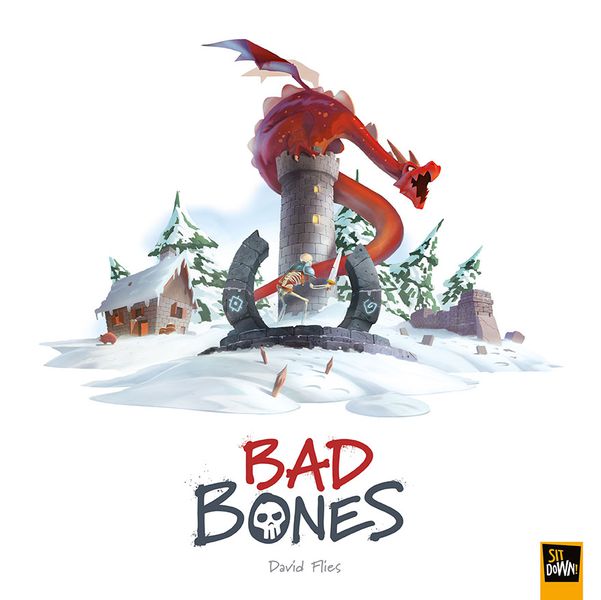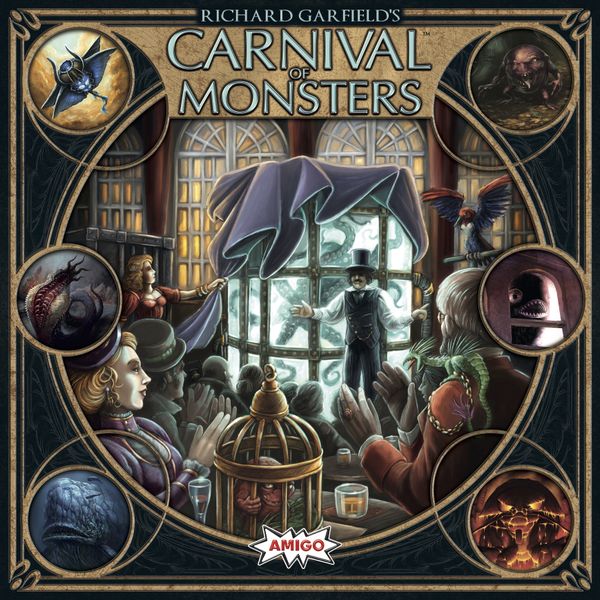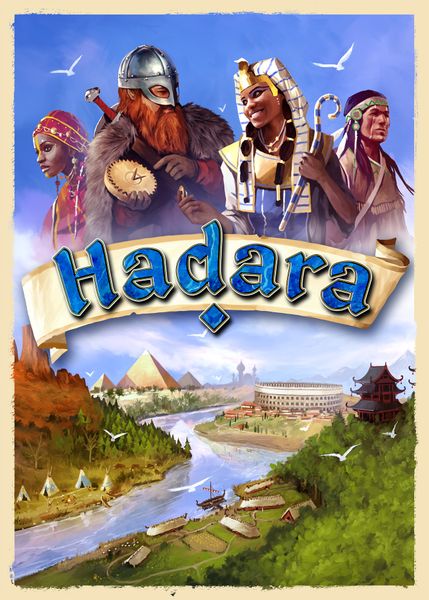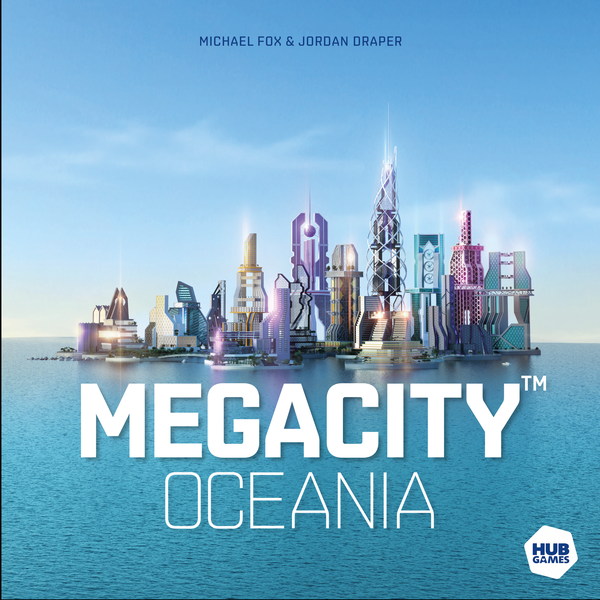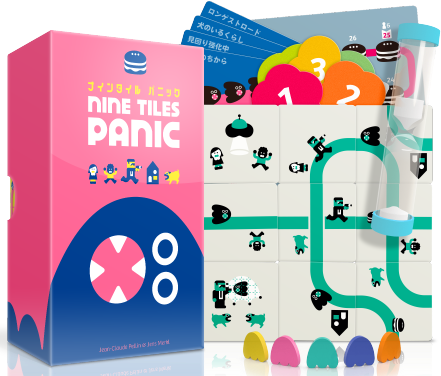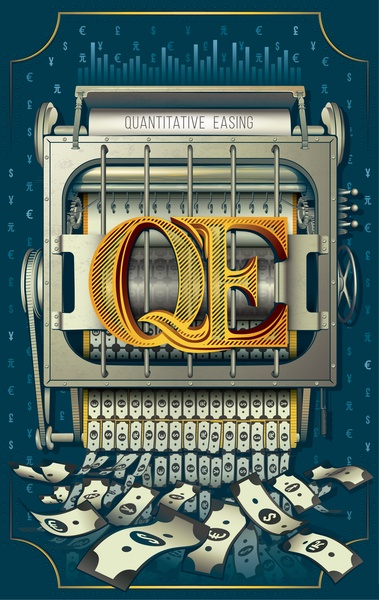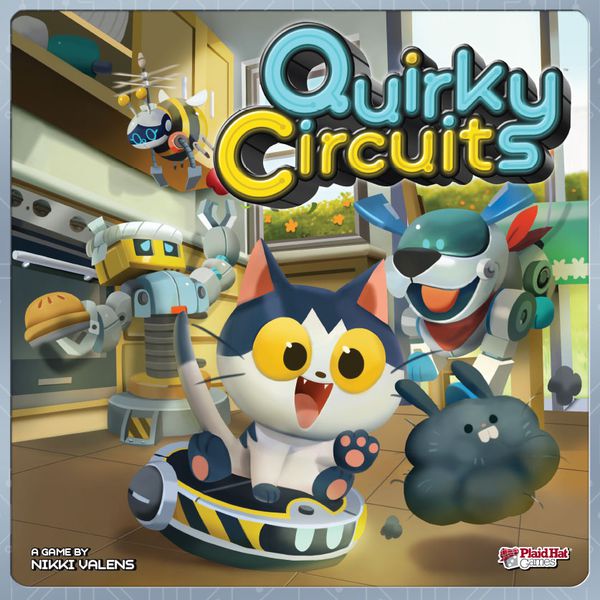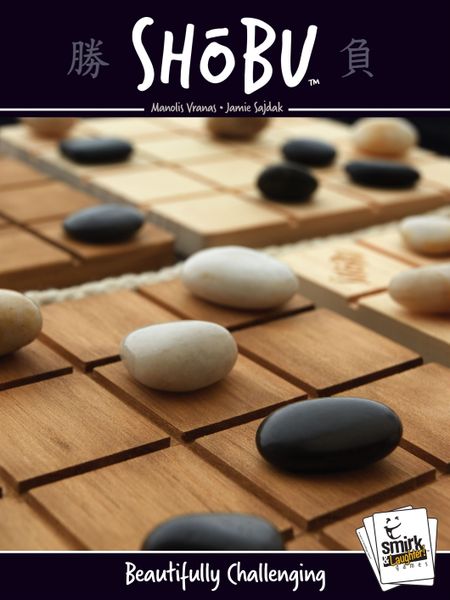When it comes to tabletop gaming, predicting any kind of market behavior is almost always a guessing game. No matter how much data you accumulate, how many experts you consult, or how much ad time you buy, humans are only predictable to a certain point. Gamers, doubly so. While there are certain fads and trends you can keep an eye out for, such as an uptick in games featuring polyominos (trust me: it’s on the rise) or a downturn in a love for colonization themes, no one has the perspicacity to guarantee with absolute certainty exactly which games are going to become market hits and which are going to be forgotten as quickly as they’re released.
This is particularly even more true now, with the volume of games released ensuring there will be more of the latter than the former.
It’s not a matter of quality – plenty of worthwhile games go overlooked while mediocre ones become super popular. Nor is it one of familiarity – otherwise crowdfunding would largely be without merit. We can all make predictions on what we collectively think which games are going to resonate with the community writ large, but the truth is, at the end of the day it’s all just an educated guess.
Obviously there are factors that, when analyzed, merge into some safer predictions as to which games are going to be a decent seller or will generate industry buzz, but even those aren’t guaranteed. These games are better known as the New Hotness, the most hyped and sought after titles, and in our previous segment we looked at 15 games that had high degrees of interest and popularity going into Gen Con and how they measured up to that initial fervor.
Today, we are going to look at a handful of the opposite: games that weren’t showing up in every single preview list and pre-convention conversation but whose positive reception in Indianapolis reached levels that equaled (and in some cases surpassed) many of the most hyped games at the onset.
So join us in Part 3 of our Gen Con 2019 Recap: Deluxe Edition, as we look at the 10 most surprising hits with attendees during the Best Four Days in Gaming.
Also See:
- Part 1 – Active Kickstarters
- Part 2 – The New Hotness
- Part 3 – The Surprise Hits
- Part 4 – News & Announcements
- Part 5 – What Comes Next
The Surprise Hits
Bad Bones
Publisher: Dude Games / Sit Down! | Players: 1-6 | Play Time: 30-45 Minutes
Every year, we at the CR like to prognosticate on what we feel may be a coming trend in board gaming over the next 12 months, and while some of these predictions have come true, others were wildly off base.
One that we did not anticipate over the last 18 months was the rise in board game iterations of “tower defense” games, a particularly popular genre in the video game world where your goal is to defend your territory from wave after successive wave of enemy attackers.
The idea of tower defense in board games isn’t new (Stronghold and Castle Panic came out a decade ago), but there has been a huge uptick of them lately, including the latest Sit Down! title, Bad Bones.
The premise of Bad Bones is much like the rest: an endless army of AI driven skeletons have descended upon your respective kingdoms. Each player must do what they can to prevent damage to a central tower keep including delaying, destroying, and attacking them, or even pointing the rattlebones towards your enemy’s tower instead. The game ends when someone’s defenses are completely overrun.
Bad Bones didn’t excite its audience solely because of the concept – it was one of several tower defense games on display. But its tables were packed all the same with people wanting to try and buy thanks to a combination of decent production materials, that each phase of the game is played simultaneously, and for those who like the tower defense idea but don’t want the multi-hour version, the entire experience coming in blissfully short at under 60 minutes.
Carnival of Monsters
Publisher: AMIGO Games | Players: 2-5 | Play Time: 45 Minutes
Amigo is one of those companies where most US gamers have undoubtedly played one of their titles over the years but didn’t realize it, mostly because for a very long time they’d gone the traditional co-publication route. That changed this year with Amigo’s return to Gen Con, bringing with them some of their greatest hit titles as well as several new ones, including the Spiel nominated card game LAMA and the lesser advertised card drafting game Carnival of Monsters.
Themed around a Victorian-era royal monster hunting society and designed by Richard Garfield of Magic: the Gathering and King of Tokyo fame (among others), Carnival of Monsters had comparatively little attention being paid to it going into the convention. But interest ramped up considerably over the course of the four days. Straightforward in nature, the game has each player acting as an aspiring monster hunter competing to get into the elite Royal Monstrological Society. To do this, you need captured monsters to show off, and to do that, you need to actually find them. Therefore not only must your drafting consist of the monster cards you wish to capture but also the requisite number of land cards needed to activate in order to do so, and making sure you can properly house said beasts.
There’s a surprising amount going on for a 45-minute drafting game, but Carnival of Monsters can be taught fairly quickly and it has ample flavor to enjoy. All of which made many go a-hunting for this one while it was still available. Luckily it will be turned loose any day now to the wider populace.
Hadara
Publisher: Z-Man Games / Asmodee | Players: 2-5 | Play Time: 45-60 Minutes
You can wander down any one of more than two dozen aisles of gamer geekdom at Gen Con, each full of wares just awaiting your attention and, ideally, some of your sweet, sweet disposable income. And in doing so, it’s almost a guarantee that you’ll stumble upon an unfamiliar product that catches your focus all the same.
For me – and apparently many other Gen Con attendees – one of those things was Hadara, the latest Z-Man title by way of 30+ year old publisher Hans im Gluck. HiG is one of those companies that enfranchised Euro gamer fans are well versed in due to their consistent line of light to medium weight games but whose catalog is often overlooked by American audiences writ large because, for some reason, a lot of their games aren’t great at leaping off the shelf at you.
*Stares at the flat box cover art*
Luckily, what’s inside the box is equally as important, and there Hadara delivers. In what is a lightweight, slightly abstracted, civ-building, card drafting game (drawing comparisons to 7 Wonders), Hadara ups the tension while keeping the play time fairly short with its tight economy, scant three rounds, and a bright colored board you rotate around that limits which cards you can draft. The whole experience adds some complexity to similarly styled games while not exactly reinventing the wheel, and that combination definitely worked for attendees. While it has been out for months in Europe, Hadara made its US street debut at Gen Con, and although more of a slow burner compared to some of the other titles on this list, it was definitely one of the word of mouth games of the con.
Horrified
Publisher: Ravensburger Games | Players: 1-5 | Play Time: 60 Minutes
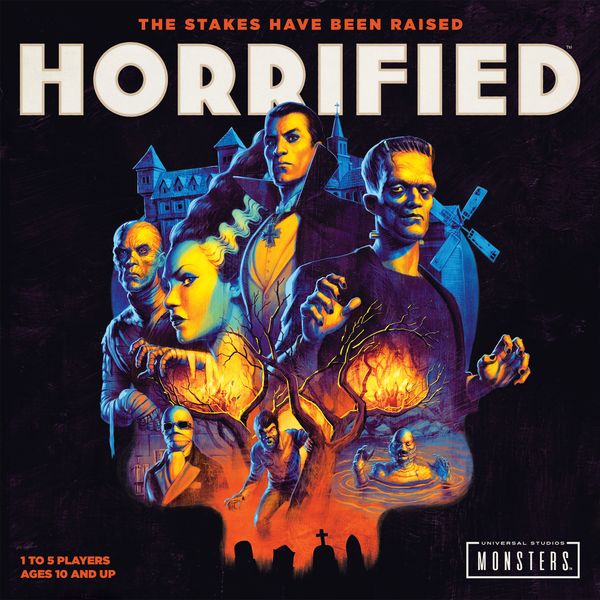 Though there are certainly many out there for which it is not a factor in the least, for the vast majority of gamers, theme can play a huge impact on whether or not you enjoy a game. Theme not only can provide a guidepost to what the actions in the game represent, and they can create a level of emotional engagement by playing the game that you would otherwise not get if it were purely abstract mechanics. A well done theme can make a good game great, and a poorly desired theme can turn people away regardless of how well its underlying architecture may be.
Though there are certainly many out there for which it is not a factor in the least, for the vast majority of gamers, theme can play a huge impact on whether or not you enjoy a game. Theme not only can provide a guidepost to what the actions in the game represent, and they can create a level of emotional engagement by playing the game that you would otherwise not get if it were purely abstract mechanics. A well done theme can make a good game great, and a poorly desired theme can turn people away regardless of how well its underlying architecture may be.
Horrified is a great example of the power a theme can convey, as evidenced by the fact that despite having little known about it going into Gen Con it was one of the more talked about games by the end. Despite the number Ravensburger titles on display at the convention, this Target exclusive game was easily the unexpected winner of the lot. And it was all because of the theme.
Based around the classic Universal Monster movies, Horrified is a lightweight, Gateway-style co-op game based around trying to rid your town of creatures such as Frankenstein and The Wolf Man. Driven primarily by a pick-up-and-deliver system, players must work together to defeat the monsters, each of which requires different strategies in order to combat. The now-available game can also be scaled up and down based on difficulty – if you feel that you have what it takes to face down even more things that go bump in the night.
Medium
Publisher: Greater Than Games | Players: 2-8 | Play Time: 30-45 Minutes
If we’re being honest about it (and there’s no reason not to), it’s that making a party game is pretty easy. They’ve been a mainstay of the hobby for decades, many born out of old parlor games. Making a decent party game that does something different, on the other hand, is a bigger challenge. Those can actually be quite tricky to develop, even if they’re inevitably met with the same degree of dismissiveness by many gamers as their more reductive brethren. Medium is very much in the latter camp, and the activity at the Greater Than Games booth was a testament to that.
There’s almost always at least one social game hit at Gen Con. For 2019, that was Medium. Based around the idea of groupthink – one of two such titles on this list – Medium is a fun-filled team-based social game that’s all about seeing if you and your partner are on the same wavelength.
In it, each player is given a handful of word cards, the combinations of which can scale in difficulty for added challenge and increased replayability. On a team’s turn, both players will play a card from their hand. Then, after a few seconds both must simultaneously say a word. The goal is for both of you to say the same word, netting you points in the process.
That’s it.
Medium is simple in nature but provides an engaging social game that’s just a little different from the standard party game fare and is ripe for both impressive successes and comical misfires. Which many were eager to try out for themselves.
MegaCity: Oceania
Publisher: Hub Games | Players: 2-4 | Play Time: 45-60 Minutes
The hobby has no shortage of board games whose premise revolves around you building something. From treehouses to galactic empires, the concept of constructing things is deep-seated. For immersion-loving gamers, however, there sometimes is a disconnect between the act and the theme. That is, if you’re building a house, why must it always be represented in the abstract? Why aren’t you actually building the house?
Enter MegaCity: Oceania, a city building game where you physically build the city.
I know, what a strangely novel idea.
The gist to MegaCity is simple: combining lightweight spatial strategy with freeform tile stacking (along with a dash of dexterity), each player has a handful of building blueprint tiles before them that need constructing. Players take turns drawing a series of acrylic tiles of varying size, shape, and color from a bag and then spend their not-turn time using those pieces to stack them atop the blueprint in any way they desire, so long as it also adheres to the requirements of that blueprint. When completed, you score its requisite points and the structures are slid across the table and joined together over the course of the game to form a unique and aesthetically pleasing cityscape.
MegaCity utilizes strategic decisions-making, the tactile pleasure of item stacking, and an artistic element that is rare to find in games not aimed at children or party scenes. Clearly this unconventional approach resonated with gamers as the game caught on with audiences fast and quickly sold out mid con.
Nine Tiles Panic
Publisher: Oink Games | Players: 2-5 | Play Time: 15-20 Minutes
Of course there would be an Oink Games title on this list. Of course there would be.
Oink Games, renowned for their small box games with creative themes and jam packed with content, has become a mainstay of the casual gaming crowd at Gen Con over the last few years, and Oink Games is more than happy to oblige that demand. This year they came with several new titles that got various amounts of love, but the runaway favorite by far was the reboot of their 2015 title Nine Tiles with Nine Tiles Panic.
In this real-time spatial game (two mechanics this publisher particularly enjoys), each player is given a set of tiles containing a host of amusing iconography from roads to aliens to dogs to hamburgers (a notable improvement from the abstract-only shapes of the original). Each round, three objective tiles are revealed to the players, and then a timer kicks off as everyone races to set up their tiles in a 3×3 manner to maximize the number of points they can achieve under for the current objectives.
Nine Tiles Panic proved to be a hotly sought after title at Gen Con 2019, in no small part because of its brisk play time, new art direction, and the frantic energy-fueled experience it provides. Unfortunately, scarcity ended up becoming a major issue as only part of the full shipment arrived correctly, but that hardly hindered interest in this manic small box fun fest.
Q.E.
Publisher: BoardGameTables.com | Players: 3-5 | Play Time: 45 Minutes
Technically speaking, Q.E. isn’t so much a new game as a completely new edition of an artisanal 2018 Kickstarter that was picked up and revamped for a wider audience – even if the theme behind the game is a little unconventional.
Q.E., which stands for the economic term quantitative easing, is an open-ended bidding game about bailing out gigantic companies deemed too big to fail. While it may seem strange to make a game that serves both as a recurring reminder of the Great Recession (because wasn’t THAT fun?) and the inextricable, disheartening ties between megacorps and the stability of the countries which support them, Q.E. nevertheless is a decent game about essentially playing the opening bit of The Price is Right, only for much higher stakes.
In Q.E. each person acts as a central bank trying to avert economic catastrophe by bailing out large companies in need of cash infusion. During each of the short rounds one of these companies is blindly auctioned off. Unlike most auction games, however, in Q.E. your funds are limitless; you can bid however much money you wish, with various companies providing endgame set bonuses. The catch is that at the end of Q.E., whoever generates the most VP wins…except for the person who spent the most money. For they crashed their economy and immediately lose.
Q.E. is a mechanics-driven game for sure with some mind games thrown in thanks to the secret bidding nature, but that hardly stopped many auction game fans from swinging by the booth and providing a little Q.E of their own for this one.
Quirky Circuits
Publisher: Plaid Hat Games / Asmodee | Players: 2-4 | Play Time: 15-30 Minutes
Look, I’m going to just say I called this one. As I mentioned in both our Origins recap piece and Gen Con off-radar preview list, there was something about this adorable, hectic, and even occasionally maddening programming game that was going to be a hit with audiences once they got to try it.
And they did, with most people leaving the demo tables to go get themselves a copy. At least, while copies of it were still available.
Quirky Circuits is not a complex game, blending elements of action programming and a cooperative slant, with the caveat that you can’t expressly tell your teammates which card you’re going to play. The goal is to move a robotic companion around various scenario maps to achieve its objective and reach the endpoint before time runs out, but doing so requires getting your group to operate like, erm, a well-oiled machine. It’s sort of like mixing Robo Rally with The Mind.
Quirky Circuits is not the kind of game for gamers who hate the idea of facets outside of your control – eek! – impacting the outcome of your turns, but its quick play time, simple rules, and refreshingly eccentric premise had attendees charged up all the same.
SHOBU
Publisher: Smirk & Laughter Games | Players: 2 | Play Time: 15-30 Minutes
If ever you wondered aloud if the most traditional of traditional board games were passé, inevitably some new game comes along to remind people that, no, no they are not. In the summer of 2019, that reminder comes in the form of Shobu, a quick two player game that bears clear decadency from games like Go and Checkers – and not just because the game literally consists of a couple wooden boards, a piece of rope, and a handful of actual polished rocks.
And the rope is mostly set dressing.
Officially Shobu was an Origins release under the Smirk & Laughter imprint of Smirk & Dagger Games, but though it sold out there, its limited presence in retrospect was nothing compared to its reception at Gen Con just ahead of its mid August retail release. In this head to head title both players have before them two gridded boards with stones belonging to both players. The goal, simple as it sounds, is to move a stone of yours from one space to another on one of your boards and then mirror that move on an opposing board. If you can push all four of your opponent’s stones off any one of the four boards, you win. It’s simple but effective tactical fun at its finest.
With concise rules, brisk play time, and modest price point, Shobu made the perfect kind convention game wherein you could sit and learn with someone and then immediately go track down your own copy. Which given the volume of copies floating around and a booth humming all convention long, plenty of people did.
That’s all for now! Check back for the next segment when we talk about some of the notable bits of major gaming and industry news that broke around or at Gen Con.

